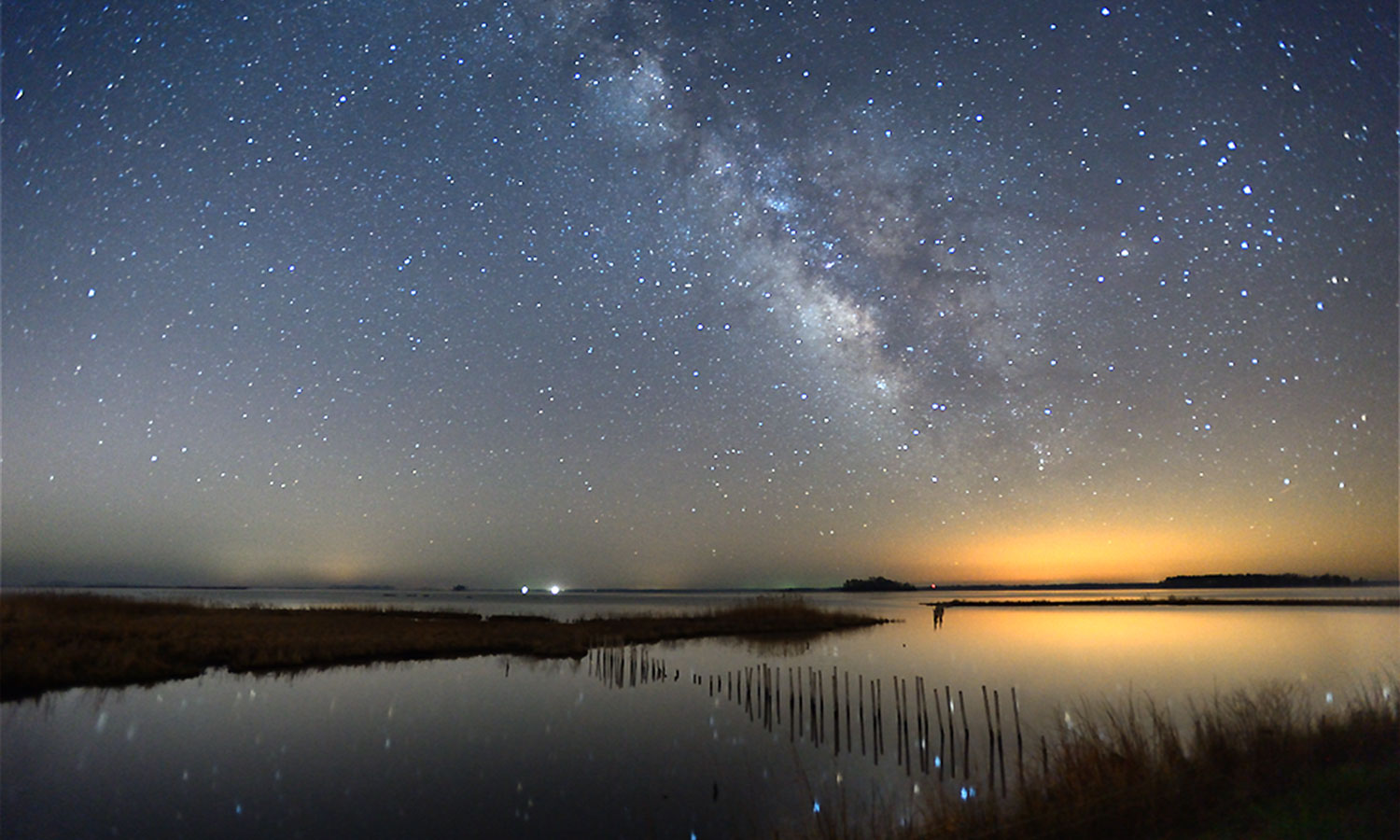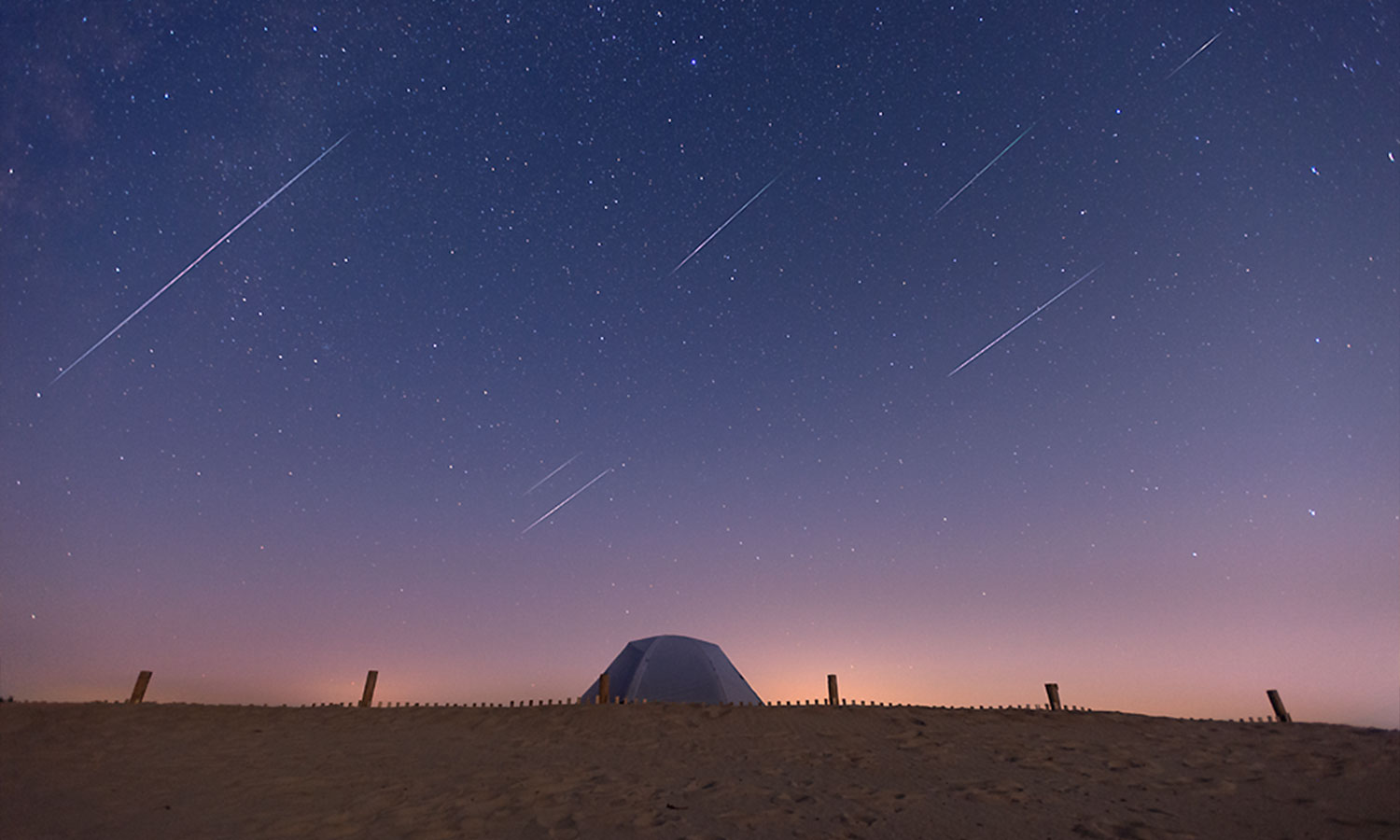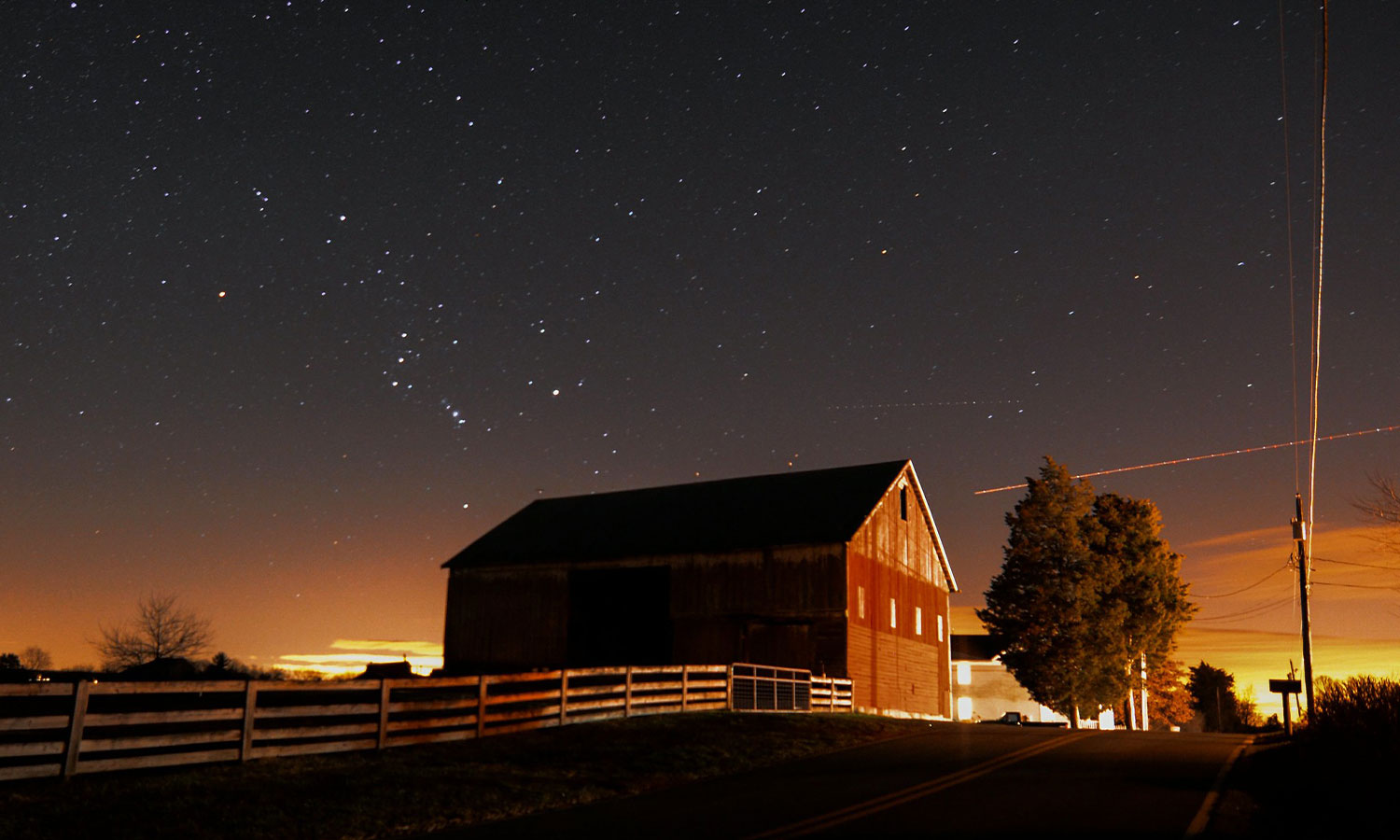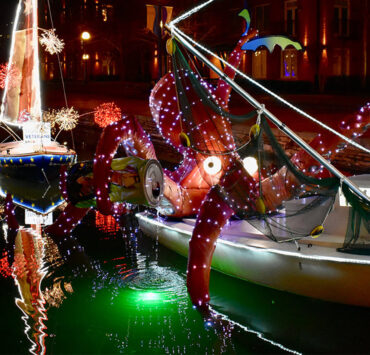Travel to the Stars: Explore December’s Sky

Whether you are traveling over the river or through the woods this winter, colder temperatures generally bring clearer skies, making winter a perfect time to pull over and celebrate the season with the stars.
As much as I want you to take a rest break to look at the stars, it is important that you do so with the appropriate equipment and in a dark, public area that is open past sunset. What is appropriate equipment? Aside from a warm puffy coat and some hot chocolate, you will want either a pair of binoculars or a lightweight telescope. Binoculars are a good choice, especially for beginning amateur astronomers. They will enable you to see many of the features of the moon such as craters and lava plains. In addition, binoculars will enable you to take a closer look at the planets. You will not be able to see the rings of Saturn; however, you will be able to see the moons of Jupiter as small pinpoints of light moving around the planet.

If you would prefer to purchase a lightweight telescope, you can readily find articles such as this one on Planet Guide that will provide you with the details regarding highly recommended travel scopes. For example, the Celestron 70 Travel Scope is on many such lists as it comes with 2 eyepieces, a Finderscope and tripod all neatly packed in a backpack. You’ll also want to download an app, such as SkyView, that will help you identify the objects at which you want to look. SkyView and other similar apps often have free versions that will enable you to identify celestial objects using your phone’s camera. Then, you can point your binoculars or telescope and enjoy the view!
To find the darkest skies in Maryland, look at a light pollution map that uses VIIRS (Visible Infrared Imaging Radiometry Suite) or check out Clear Sky Charts, which will give you visibility reports on some of the state’s best stargazing locales. The darkest skies in Maryland are on the Eastern shore, around the Chesapeake Bay, and out west in the areas surrounding Cumberland. However, do not feel that you can only look at stars in these areas! You will be able to look at stars and planets in any place that is relatively devoid of the light pollution that you find in the bigger metropolitan areas. Just keep in mind, the darker the area, the more you will be able to see.
Finding public open spaces that are appropriate for viewing the stars can be difficult. Appalachian Trail parking lots that are in an open area, such as the parking lot that is on Rt. 40 between Hagerstown and Frederick, are great viewing areas as they are open all night. Also, many of Maryland’s Welcome Centers have rest areas that are open after dark, even though the Visitor Centers close at 5:00 pm. Last but not least, if you happen to be at the Eastern Shore, many of Maryland’s beaches are open to the public until 10:00 pm. Wherever you decide to stop, please make sure you are on public land that is still open to the public when the stars come out!

Now that you are outfitted and on your way, at what celestial objects should you look? This has always been my favorite time of year as it means the constellation Orion will be hunting the southern skies for another season. Orion is part of the Winter Circle, an asterism that is made up of stars from six different constellations. It is easily identified by first looking to the south and locating the three diagonal stars that make up Orion’s belt. From the highest star on his belt, move down and to the west to find the star Rigel that is situated in Orion’s foot. Rigel will be the starting point for our trip around the Winter Circle.
Traveling down and to the east of Rigel, you will find the bright star Sirius, the nose of Orion’s hunting dog in the constellation Canis Major. For the month of December, I prefer to believe it is the nose of a reindeer that Orion uses to carry his hunting equipment – similar to another jolly man that we know! Of course, both Orion and Canis Major are accompanied by the constellation Canis Minor, Orion’s small hunting dog. You can find him by looking up and east of Sirius to the bright star Procyon.
From Procyon, head straight up and you will see two stars stacked one almost directly above the other. These stars, Pollux and Castor, are the brightest stars in the constellation Gemini.

Continue looking up and to the west, and you will find the star Capella, located at the top of the Winter Circle. Although Capella appears to be one star, if you had a telescope strong enough to see it well, you would notice it is actually four stars arranged in two binary star systems. The stars in each system appear to dance a slow waltz around one another, having chosen their partner long ago.
Look clockwise and down to the great red eye of Taurus the Bull, our final constellation in the Winter Circle. At first glance, the eye, Aldebaran, may seem to be the same size as any other star. In actuality, Aldebaran is approximately 44 times larger than our own Sun – not a star to be trifled with!
Be sure to stop at sunset on the 21st to see the great conjunction of the planets Jupiter and Saturn. Conjunction happens when two or more objects meet up in the sky. At their closest, Jupiter and Saturn will be so close that they may appear as one very bright star. This is an event you do not want to miss as there will not be another conjunction in which Jupiter and Saturn are this close until March 15, 2080.
Wherever you travel this winter season, I hope you will take a few minutes to bathe in the comfort of our evening Maryland skies and enjoy the steady friendship offered by our stars and planets.
Lead Photo: Self-portrait taken on Assateague Island, MD. Credit: Jeff Berkes Photography
About the Author
Alicia Robertson
Alicia Robertson is the chairperson for TriState Astronomers, an amateur astronomy club based in Hagerstown, MD. She is also the STEM/Planetarium Resource teacher at the William Brish Planetarium in Hagerstown. When she is not enjoying her time at the Planetarium, she is spending time with her husband and three dogs.















